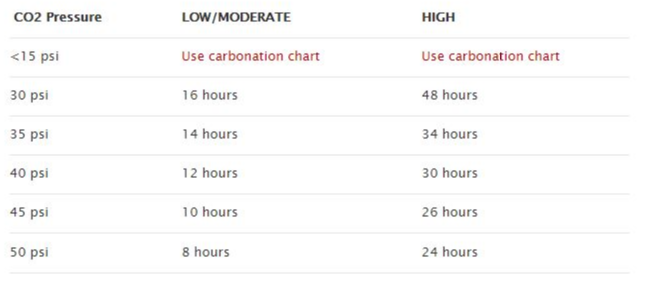- Joined
- Dec 14, 2015
- Messages
- 151
- Reaction score
- 15
I’ve been reading about dry hopping in a keg warm under pressure. What I don’t understand is that many of these scenarios car for warm dry hop under pressure for five days of 30 psi. If I do 30 psi cold, then my beer is carbonated in a day. How is anyone successfully dry hopping warm in a keg or under pressure without carbonating their beer over this period of time?
trying to avoid over carbonated beer
trying to avoid over carbonated beer




